If you’re looking to add some oomph to your writing, these imagery examples are just what you need.
Not sure what imagery is?
It’s an amazing literary device that tickles your readers’ senses, grabs their attention, and draws them into your story.
And you can find out more about it right here in this scenic study guide!
In this post, you’ll get some great examples of imagery, and you’ll also learn:
- The difference between imagery and figurative language;
- Five additional literary devices that use figurative language;
- Seven common types of imagery (with examples);
- How imagery has been used in literature, movies, songs, and everyday speech.
Let’s dive in.

What is Imagery?
Imagery is the art of creating a mental image through descriptive words. Writers use either literal or figurative language to help readers picture an image of a scene by engaging their senses and evoking emotions.
This literary device describes objects, actions, or ideas while providing readers with sensory imagery that pulls them into a story, allowing them to relate to the characters and better understand the narrator.
Literal Imagery vs. Figurative Imagery

Imagery can contain either literal or figurative language.
Literal imagery uses descriptive words that mean exactly what they say.
For example:
The grass was green, and the flowers were red.
Figurative imagery uses descriptive language that means something different than or goes beyond the literal definition of the words, often through exaggeration, comparison, or symbolism.
For example:
He has a heart of stone
It does not mean his heart is literally made of stone. Instead, it is a figurative comparison of his unkind or cruel actions to being as hard and cold as a stone.
Imagery & Figurative Language
Imagery and figurative language add depth and color to your storytelling, marketing messages, or blog posts, making your writing inviting and alluring to readers.
Imagery is not automatically the same thing as figurative language. The writer of imagery has options…
They can include just literal descriptive language or figurative language or both.
Figurative language is a “tool” to be used in imagery and other literary devices, such as metaphors, onomatopoeia, personification, similes, and hyperbole, to describe something.
Here are some simple definitions and examples of these literary devices:
Metaphor
A metaphor compares two familiar, but unrelated, things to suggest a likeness between them.
Example:
Time is money.
Onomatopoeia
An onomatopoeia is a word that sounds like the action it describes.
Example:
The soda fizzed as I poured it into the glass.
Personification
Personification is when objects or animals are given human-like qualities.
Example:
Opportunity knocked at his door.
Simile
A simile compares two different things, using the words “like” or “as.”
Example:
She was as happy as a clam.
Hyperbole
Hyperbole is an extreme exaggeration, not meant to be taken seriously.
Example:
You snore louder than a freight train!
7 Major Types of Imagery to Elevate Your Writing
Elevate your writing by making your scenes come alive, so your readers feel like they are part of your story. Using imagery whenever a description is required will help readers form a mental picture of each scene.
There are seven major types of imagery used in writing.
Five of these pertain to the basic senses: sight, hearing, smell, taste, and touch. The remaining two pertain to physical movement and internal sensations or feelings.
1. Visual Imagery

Visual imagery appeals to our sense of sight. It describes things we see, such as colors, sizes, shapes, and patterns.
This imagery type is the most common and is used by authors as it helps them vividly describe characters and scenery in a story.
Examples of visual imagery:
As they sat on the soft, sugary sand beach waiting for the sunset, the sinking sun shimmered on the water as the blue sky transformed into various shades of purple and pink.
Veronica was dressed to impress. The scanty scarlet lace dress clung to every curve.
Misty plopped down on the comfortable couch, but it was difficult for her to relax when the room was a disaster area-toys and shoes and books and dishes were strewn about.
Notice that literal descriptive language is mainly used in these examples. However, in the last example, figurative language is used to compare the room to a disaster area.
2. Auditory Imagery
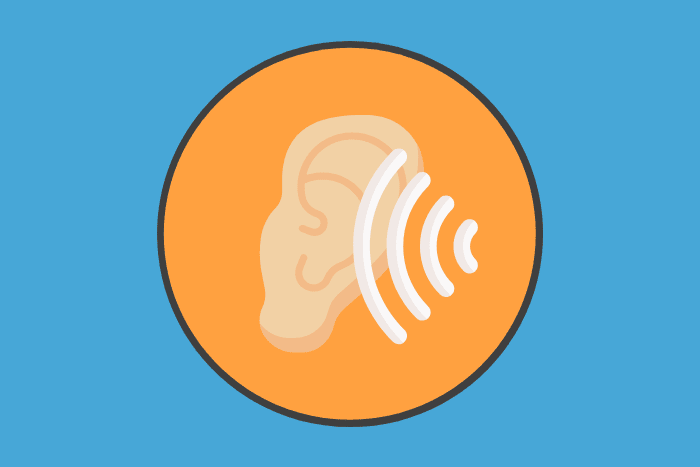
Auditory imagery engages our sense of hearing. It describes sounds that we hear, such as noise, music, and even silence.
Examples of auditory imagery:
As she walked through the wintery woods, her teeth chattered and the leaves crunched under her feet.
The pitter-patter of rain and whispering breeze had progressed into a gushing downpour and howling wind.
The eerie silence made him stop in his tracks.
Notice the sounds made by her teeth, the leaves, rain, and wind-and even the silence sounds “eerie.”
3. Olfactory Imagery

Olfactory imagery relates to our sense of smell. It describes different scents, such as fragrances and odors.
Smell has the power to link us to the past, and familiar smells can trigger our memories and emotions.
Olfactory imagery examples:
The sweet fragrance of honeysuckle always reminded Jenny of her mother’s perfume.
He woke up to the smell of burnt toast and greasy bacon, when all he wanted was coffee.
As she entered the warm house, she was welcomed by the scents of hot apple cider and cinnamon.
Notice how the honeysuckle fragrance triggers a memory for Jenny. Also, the smells of burnt toast and greasy bacon seem unpleasant to the man, but the scents of apple cider and cinnamon appear to evoke pleasant feelings for the woman.
4. Gustatory Imagery
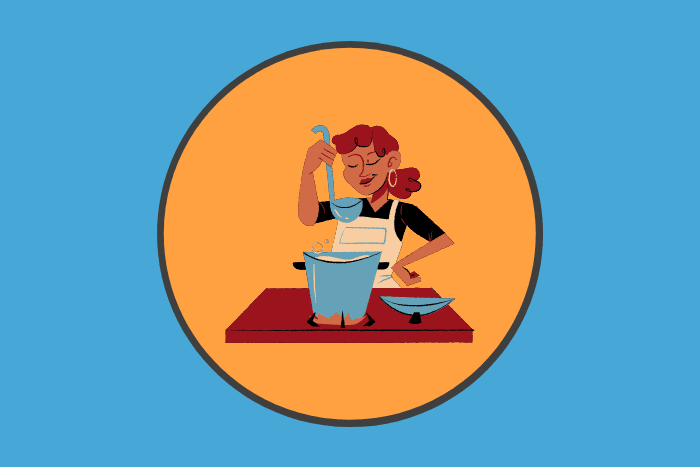
Gustatory imagery appeals to our sense of taste and food cravings. It describes flavors, such as spiciness, sweetness, sourness, savoriness, and saltiness, and also includes the textures and sensations we experience while eating.
This imagery type works well with olfactory (smell) imagery.
Examples of gustatory imagery:
She couldn’t wait to sink her teeth into the succulent, salty steak.
My mouth nearly watered as I stared at the decadent chocolate mousse and imagined the sweet, creamy dessert rolling on my tongue.
The boy bit into the ripe peach and smiled as the sweet, soft fruit filled his mouth, and the juice ran down his chin.
Are you feeling hungry now?
Notice the descriptive words being used to describe flavors and textures.
We can also relate to the experiences of the girl sinking her teeth into the steak, and the boy having peach juice running down his chin.
5. Tactile Imagery

Tactile imagery engages our sense of touch. It describes what you can physically feel, such as temperature, movement, texture, and other sensations.
Examples of tactile imagery:
A gust of cold air blew over her, causing her body to shiver. After she pulled the fuzzy blanket up to her chin, she was warm and cozy.
His legs ached after climbing so many flights of stairs, and he could feel the flush in his face. He couldn’t wait to get out of his sticky, sweaty clothes and let the cool, soothing water wash over him in the shower.
The dog yelped after stepping on a prickly burr, and then I almost yelped when I yanked it from his paw and the prickles pierced my fingers.
Notice the feeling of experiencing different temperatures, the textures of the “fuzzy” blanket and the “prickly” burr, and how both the dog and human felt pain after touching the burr.
6. Kinesthetic Imagery
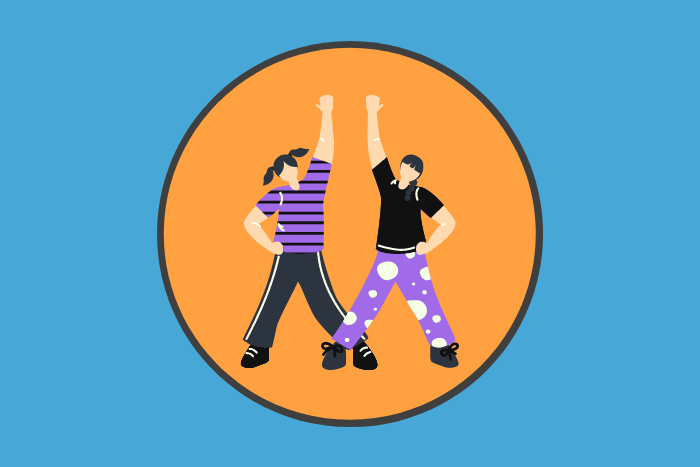
Kinesthetic imagery is unrelated to the five basic senses and instead relates to the actions and movements of people or objects. It describes physical movement, actions that lead to touch, and temperature.
This type of imagery can be similar to tactile (touch) imagery.
Examples of kinesthetic imagery:
He rummaged through each drawer, hurling items to the floor until he found the mysterious bracelet.
She raked her fingers through her hair in an attempt to smooth out the knots.
He enjoyed watching the palm trees swaying in the wind as rain drizzled from the sky.
Notice the physical movements of people rummaging, hurling, and raking. The trees and rain also show their movement.
7. Organic Imagery
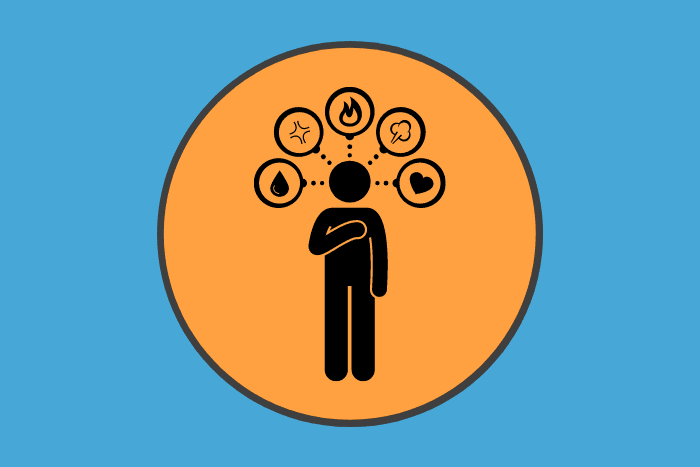
Organic imagery is also unrelated to the five basic senses and instead appeals to internal sensations, feelings, and emotions. It describes personal experiences, such as fatigue, hunger, thirst, fear, love, loneliness, despair, elation, and nostalgia.
Organic imagery is subjective, which contributes to it being a more difficult and complex form of mental imagery since the writer’s goal is to create a specific emotion or feeling within the reader.
Examples of organic imagery:
Her eyes lit up the moment she saw him, and she ran into his arms.
He lowered his head and covered his face with his hands. He couldn’t bear for her to see what her words had done to him.
She clenched her fists and then threw her hands in the air as he continued to yell at her.
Here we can feel emotions of happiness, shame, sadness, anger, and frustration.
More Imagery Examples
Examples of imagery can be found in all kinds of writing, such as fiction, nonfiction, novels, stories, whitepapers, poetry, and plays.
Imagery is also found in pop culture, movies, songs, and everyday speech.
Below are examples of imagery taken from excerpts of two novels and two poems as well as examples from a movie, two songs, and various sayings.
Examples of Imagery in Literature
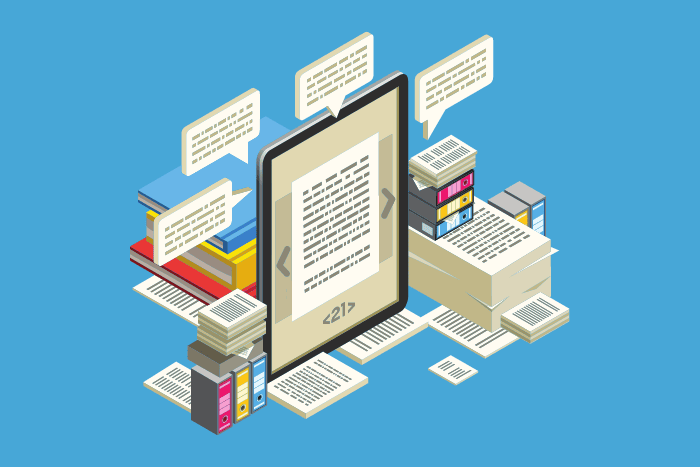
Visual Imagery Example
The Hobbit, JRR Tolkien:
“The far bank was steep and slippery. When they got to the top of it, leading their ponies, they saw that the great mountains had marched down very near to them. Already they seemed only a day’s easy journey from the feet of the nearest. Dark and drear it looked, though there were patches of sunlight on its brown sides, and behind its shoulders, the tips of snow-peaks gleamed.”
Tolkein’s alluring, powerful words describing the mountain allow the reader to experience the same feelings of awe, nervousness, and anticipation as Bilbo, Gandalf, and the Dwarves.
Auditory Imagery Example
Birches, Robert Frost:
“…Often you must have seen them
Loaded with ice a sunny winter morning
After a rain. They click upon themselves
As the breeze rises, and turn many-colored
As the stir cracks and crazes their enamel.”
Here the reader can hear the clicks and cracks of the birches on a cold winter morning.
Tactile Imagery Example
Jane Eyre, Charlotte Brontë:
“I heard the rain still beating continuously on the staircase window, and the wind howling in the grove behind the hall; I grew by degrees cold as a stone, and then my courage sank. My habitual mood of humiliation, self-doubt, forlorn depression, fell damp on the embers of my decaying ire.”
The figurative descriptions of temperature (“cold as a stone”) and dampness allow the reader to feel Jane’s discomfort and depression.
Kinesthetic Imagery Example
I Wandered Lonely as a Cloud (aka “Daffodils”), William Wordsworth:
In this poem, he speaks of golden daffodils that are:
“Fluttering and dancing in the breeze” and “Tossing their heads in sprightly dance.”
The way these daffodils are moving evokes a sense of happiness or glee to the reader.
Organic Imagery Example
Birches, Robert Frost:
“So was I once myself a swinger of birches.
And so I dream of going back to be.
It’s when I’m weary of considerations,
And life is too much like a pathless wood…”
This excerpt allows the reader to experience the writer’s feelings of nostalgia.
Examples of Imagery in Movies, Songs, & Everyday Speech
101 Dalmations
In the animated movie, 101 Dalmatians, one of the puppies uses figurative imagery (hyperbole) by exaggerating when it says:
“I’m so hungry, I could eat a whole elephant.”
What a Wonderful World, Louis Armstrong
Successful imagery not only paints a pretty picture, but also helps us feel and connect with a scene emotionally.
“I see trees of green
Red roses too
I see them bloom
For me and you
And I think to myself
What a wonderful world
I see skies of blue
And clouds of white
The bright blessed day…”
Notice how Louis Armstrong’s lyrics embrace poetic imagery to illustrate a compelling scene.
But pay attention to how the lyrics make you feel.
Do you feel a soothing sense of love and happiness? Or maybe something deeper?
Firework, Katy Perry
“Do you ever feel like a plastic bag
Drifting through the wind
Wanting to start again?
Do you ever feel, feel so paper-thin
Like a house of cards
One blow from caving in?
…Baby, you’re a firework
Come on, let your colors burst…”
This song contains a lot of figurative language (similes and metaphors) by comparing or associating human emotions to objects and events.
Everyday Speech
People often use imagery to communicate their feelings, thoughts, and ideas:
She’s as sweet as pie.
It was like a dagger to the heart!
My head is pounding like a drum.
These examples use figurative language to make comparisons that help the listener better understand what the speaker is expressing.
Ready to Write Your Own Imagery Examples?
Phew! Your head must be spinning from all these writing tips.
But now you know how to use imagery to upgrade your creative writing and get the results you want.
The best way to become a master at writing different types of imagery is to practice.
Still not sure where to start?
- Review these examples as often as needed;
- Consider what kind of description you need to write;
- Decide which senses you’d like to appeal to;
- Start writing.
And before you know it, you’ll be sharp as a tack!
The post 39 Imagery Examples (+ 7 Types) To Stimulate The Senses appeared first on Smart Blogger.

No comments:
Post a Comment